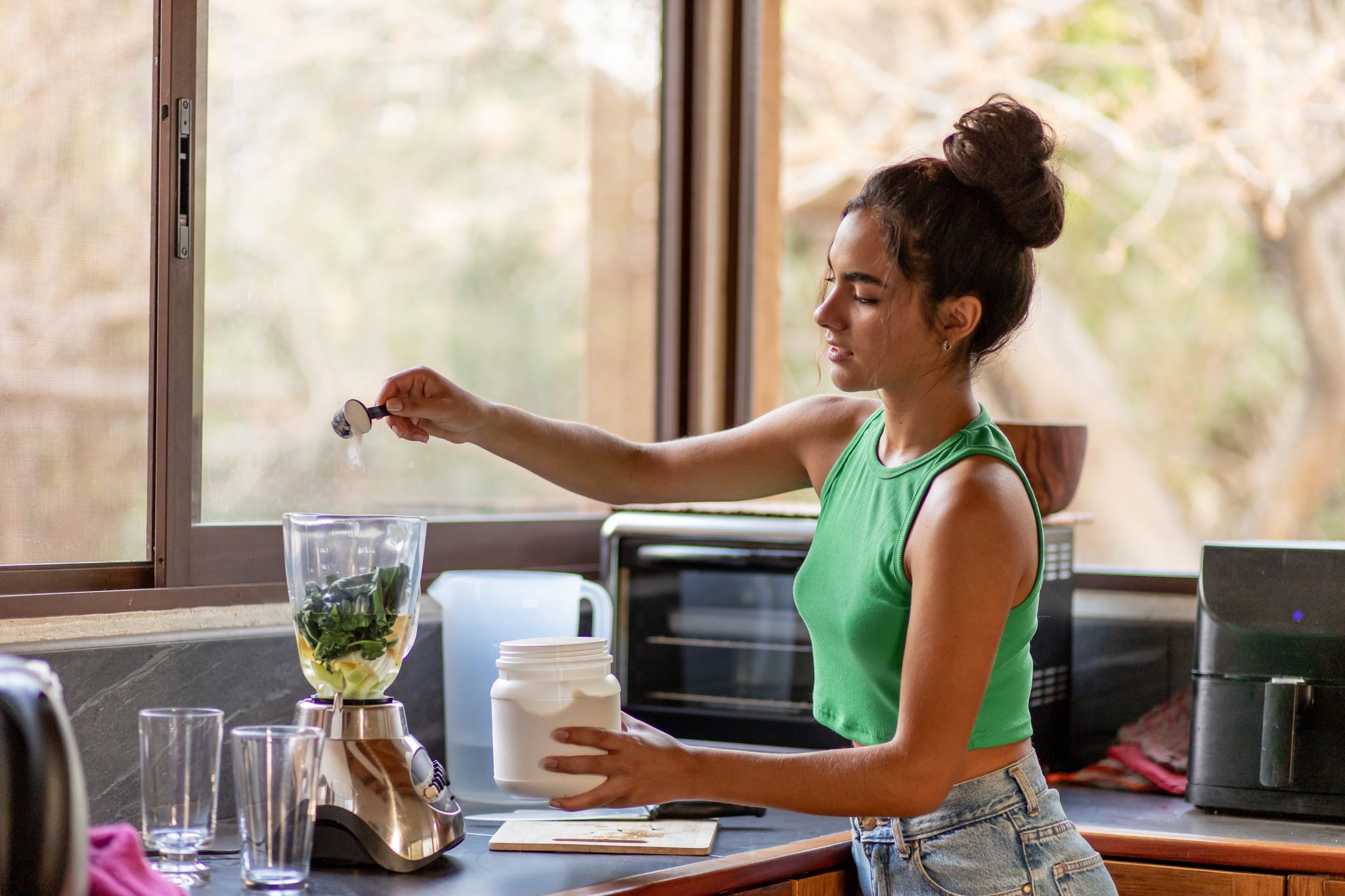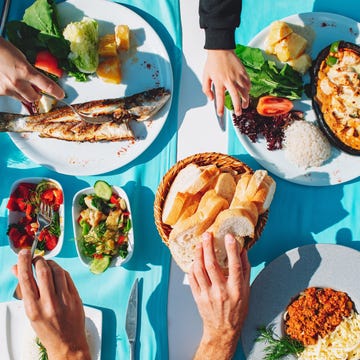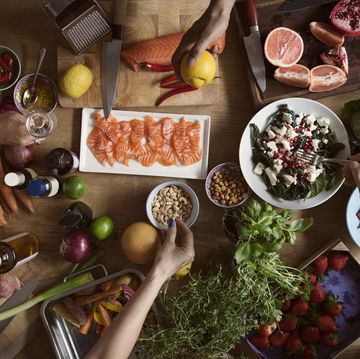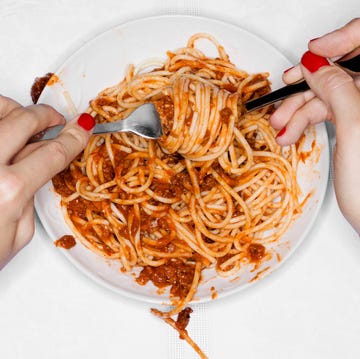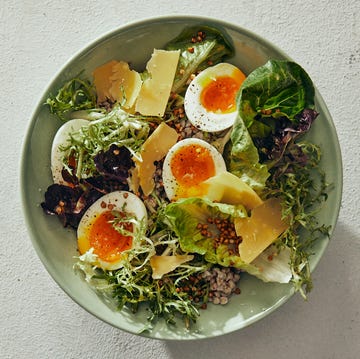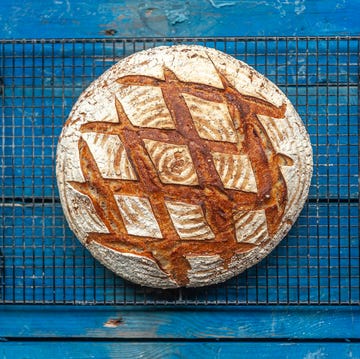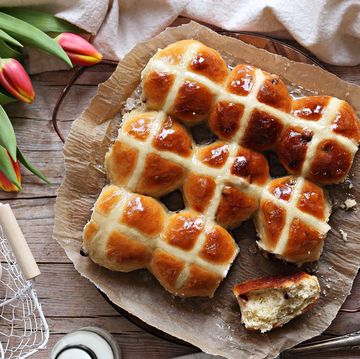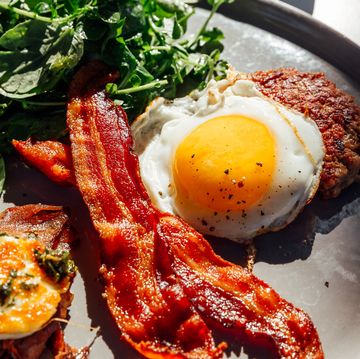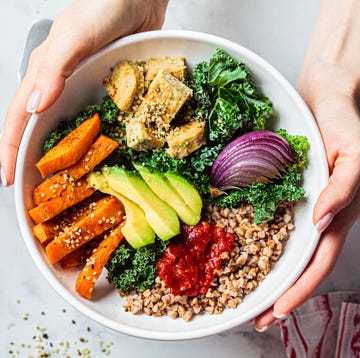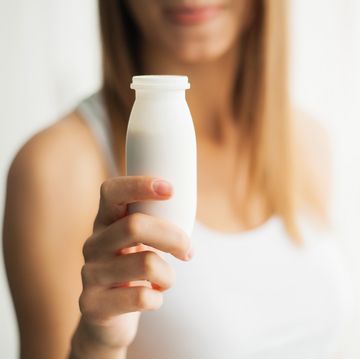If you’re a lifelong carnivore, then vegetarian protein can seem baffling. Cauliflower as steaks? Peas are now milk? Plus, how can plants possibly stack up against grilled chicken or baked salmon? And will a plate of legumes really help with muscle growth and repair?
While there’s a growing interest in reducing meat consumption (since there are both significant health benefits to a plant-based diet and benefits, of course, to our planet), the truth is, a vegetarian diet can lack certain nutrients (and if you do decide to go veggie, you’ll need to get clued up on exactly how you can get all the nutrients you need in your diet).
In fact, according to data from the Vegetarian Society, the latest figures show there are just over 3 million vegetarians and vegans in the UK, with one in nine Britons aged 18 to 24 choosing not to eat any meat, poultry, game, fish or shellfish, according to YouGov.
But despite these figures, Google is still flooded with searches on ‘how to get enough protein as a vegetarian’ and ‘what do vegetarians eat for protein’. Turns out, the veggie curious are a little confused as to how to actually live a life sans sausage, steak and wings (and still ensure they’re getting all those important amino acids).
If you’re going plant-based, or are already part of the tribe but are confused about what vegetarian protein is worth putting in your meal prep and how to make plant-based gains then stick with us.
We called up lifelong vegetarian and award-winning nutritionist Anita Bean to answer your most pressing FAQs. Buckle up, people.
Jump to:
- How much protein does a vegetarian need?
- How do vegetarians get enough protein?
- What can vegetarians eat for protein?
- Is it healthy to go vegetarian?
- Should you eat protein before a workout?
- How much protein should I eat after a workout?
- What’s the difference between vegan and vegetarian protein powder?
- Is there such a thing as too much protein?
- Try this high-protein pancake recipe
How much protein does a vegetarian need?
Vegetarian or not, fuelling a dedicated fitness regime requires protein to aid in the recovery of muscles post-exercise. As such, the daily ‘amount’ a person needs won’t change based on their choice to eat meat or not – the amount of food they may have to eat to hit their protein quota will probably change, though.
‘The ideal amount to consume at each meal is about 20g of protein,’ Bean advises. ‘As a vegetarian, this is a relatively easy number to hit: it’s about 3 eggs, 250g of Greek yoghurt or 500ml of fortified milk.’
The ideal quantity of protein for all of us is around 20-30% of our overall diet
How do vegetarians get enough protein?
Vegetarians straddle the space between veganism and carnivorism in that they can consume some proteins that are ‘whole’ proteins such as dairy products and eggs, but steer clear of meat and fish – the most common forms of ‘complete’ proteins.
A ‘complete’ protein is a food that contains enough of the nine essential amino acids.
Quick recap: amino acids are the building blocks of protein cells. There are 9 essential amino acids and 11 non-essential amino acids.
Non-essential amino acids can be made in the body, but essential amino acids must be obtained from food sources.
As the majority of complete proteins are animal byproducts, vegetarians may need to work harder on food combining to make sure they’re hitting the mark when it comes to consuming proteins that are bioavailable and ‘complete’.
‘Beans are a great source of protein,’ says Bean, but they aren’t a complete protein so you need to mix them up to get the full range. ‘If you combine the beans with some grains – whether that’s quinoa, oats or wholegrain rice, then the amino acids will complement each other in building a complete protein.’
Complimentary vegetarian protein ideas:
- Yoghurt with nuts and muesil
- Peanut butter on whole grain toast
- Whole grain pitta and hummus
- Macaroni and cheese
- Beans with tacos and rice
- Lentil or bean soup with pasta
- Tofu with quinoa, barley or buckwheat
What can vegetarians eat for protein?
‘You do need to work harder as a vegetarian,’ Bean explains. ‘A spoonful of hummus is not going to provide the same amount of protein as, say, chicken or fish. That being said there are so many vegetarian protein sources to tap into’:
- Beans
- Lentils
- Chickpeas
- Soy products such as tofu
- Nuts
- Quinoa
- Chia seeds
- Buckwheat
- Hemp seeds
- Whole grains
- Dairy products like cheese, milk and eggs
Is it healthy to go vegetarian?
Whenever you cut out a food group, there’s always the chance of certain deficiencies cropping up – especially if you’re not keeping a close eye on hitting the right macronutrient quantities. For example, the best sources of zinc are dairy, meat and shellfish, and iron from plants is much harder for your body to absorb.
But should protein deficiency be something to worry about if you’ve decided to ditch the Nandos and go meat-free?
‘Firstly,’ says Bean, ‘you can’t just stop eating meat’. A transition period where you find out how to include enough protein in your diet is mandatory if you want to make the switch a healthy long-term one. Simply cutting out an entire food group without any real planning on how you’re going to replace those nutrients isn’t ideal.
Did you know? Some vitamins and minerals can be stored in the body for up to a year. So this means, when you first become a vegetarian you may feel great, but over time, the lack of essential nutrients can have serious effects on your health.
Once you’ve fully transitioned, the meat you were eating will need to be substituted with other protein, ‘otherwise, you’ll end up being deficient in nutrients, lacking energy and struggling to recover after exercise,’ Bean says.
‘You need to ensure that you are including enough protein as a vegetarian in every meal, every snack, and after exercise particularly if you are serious about your fitness and are exercising everyday,’ she concludes.
Should you eat protein before a workout?
The fuel you use during exercise is the energy you’ve stored from fuel and rest in the 24 hours prior to your workout – as such, it’s not enough to scoff a yoghurt and banana 10 minutes before if the day before you ate only jelly tots and popcorn (we wish it was that easy).
However, you should be fuelling up before you workouts, but this will largely be with carbohydrates – not protein.
If you’re sweating it out with a high-intensity session, Bean advises that you be well-fuelled up with glycogen (carbohydrates) before the workout.
‘This means you should also be having a pre-exercise meal about 2-4 hours beforehand that's relatively high in carbohydrates. It gives your body enough time to digest the food, but not too long an interval that you end up using the energy by the time you come to exercise,’ Bean says suggesting a few of her go-to pre-workout meals:
- Porridge with bananas and blueberries
- Pasta with lentil bolognese
- Pad Thai noodles with vegetables tofu
However, if you plan on working out at a lower intensity – something like a recovery run, Pilates class or gentle walk – your pre-workout meal should be lower in carbohydrates but high in protein and healthy fats such as:
- Avocado salad with leafy greens and salmon
- Frittata with red peppers and vegetables
How much protein should I eat after a workout?
Without a shadow of a doubt, everyone has heard about the great-race-to-protein post-workout.
But how many grams of protein must you consume post-workout for muscle growth; what window of time should they be consumed in and is protein really the only macronutrient we should be focused on?
‘It’s not just protein,’ Bean emphasises. ‘For rapid recovery, you should be getting your carbohydrates in within 2-4 hours post-exercise to replace the glycogen stores you burnt during exercise.’
‘Along with this, post-workout protein is a necessity after an intense workout as it’ll help repair and rebuild muscles. For most workouts that’ll be anywhere between 20-25g of protein,’ she recommends, suggesting some of her post-workout vegetarian recovery staples that are high in both protein and carbohydrates:
- Homemade smoothie with milk, yoghurt, fruit and leafy greens like spinach
- Fruit and nut bar or fruit with nuts such as banana and peanut butter
- Pita bread filled with hummus, falafel and salad
- Bean and sweet potato tortilla with eggs
- Lentil, chickpea and spinach dhal
What’s the difference between vegan and vegetarian protein powder?
Protein powders are a funny thing for vegetarians in that they’re basically all suitable for veggies as they’re either based on whey protein – a cow’s milk derivative or vegan sources such as brown rice, hemp, pea or soy.
If you are vegetarian but opt out of consuming cow’s milk products for intolerance or preference reasons, then choosing a vegan protein may work better for you. Vegan proteins are often a combination of different sources (e.g. pea and brown rice or hemp) to make sure you’re consuming a ‘complete’ protein in a way your body can absorb and put to good use!
NB: We recommend opting for food first over shakes – remember some of the products on the market are highly processed, often filled with additives and fillers.
Is there such a thing as too much protein?
Our bodies can’t store protein for later, so you’ll either end up flushing it down the loo as you excrete it, or it may be converted into fat.
Eating too much protein has been linked to symptoms such as intestinal discomfort, dehydration, nausea, fatigue and headaches.
Aim to eat protein in small amounts throughout the day, not just in one meal.
Try this high-protein pancake recipe
Preparation time: 5 minutes | Cooking time: 10 minutes
Ingredients
- 100g rolled oats
- 1 tsp baking powder
- 1 banana peeled and mashed
- 150g plain cottage cheese or quark
- 2 eggs
- 1 tsp cinnamon
- Light olive oil, rapeseed oil or butter for frying
Method
- Place the oats in a food processor or blender and blitz for 30 seconds. Add the remaining ingredients except the oil or butter and process for another 30 seconds or until you have a smooth batter.
- Heat a non-stick pan on a medium heat, add a little oil or butter. Drop large spoonfuls of batter into the pan and cook without disturbing until bubbles form and the edges are cooked. Flip the pancakes over with a spatula and cook until the other side is golden brown.
- Transfer pancakes to a plate or, if you don't want to serve as you go, preheat your oven to 120°C/fan 100°C/gas mark 1 /2 and stack the pancakes as you cook them, using a strip of greaseproof paper in between each to stop them sticking while you cook the rest of the batter.
- Serve the pancakes with berries, drizzled with maple syrup or honey.
Nutrition per pancake:
97 calories (5g protein, 3g fat - 1g saturates, 11g carbs - 3g total sugars, 1g fibre)
Anita Bean is an award winning nutritionist, best selling author and lifelong vegetarian. Recipe extracted from Vegetarian Meals in 30 Minutes by Anita Bean. Published by Bloomsbury Sport, £16.99. Available to buy now.
Like this article? SIGN UP TO OUR NEWSLETTER to receive your weekly dose of features.
